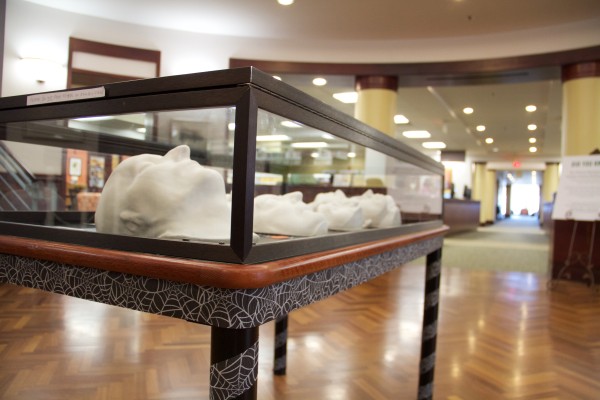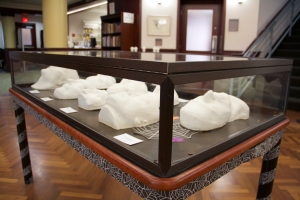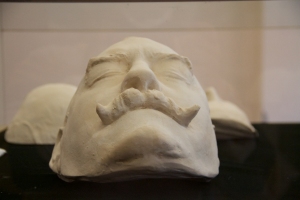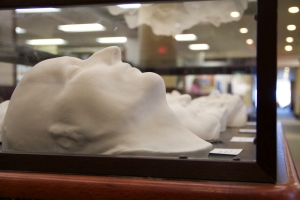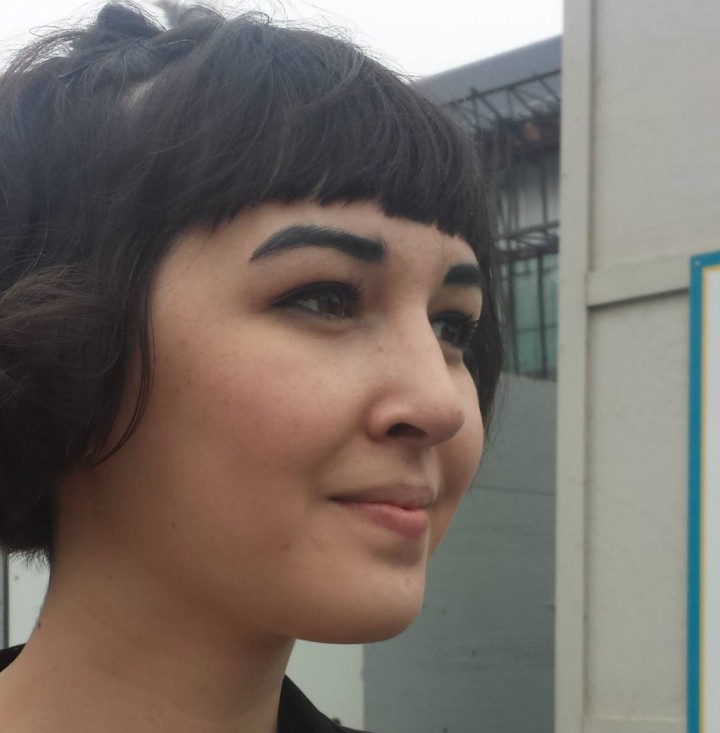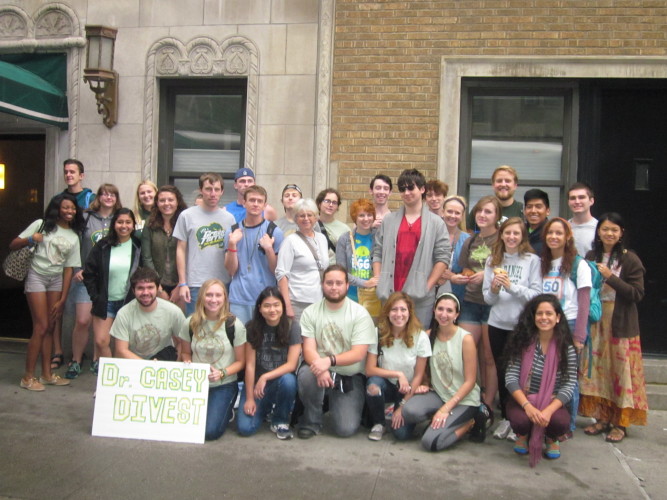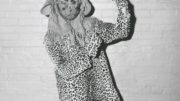McDaniel College is a place where the arts can flourish. A testament to this statement is the newest exhibition at Hoover Library.
The most recent art exhibition at McDaniel is surprisingly being shown not at the Rice Gallery but at Hoover Library. The Death Mask Exhibition, a collection of life-masks and death-masks, found a home at Hoover, and at McDaniel, after Dr. Henry McComas donated the collection to the college.
The collection came to McDaniel thanks to Philip Myers, alumnus of the college. After discussing the future of the collections with his cousin Dr. McComas, Myers proposed to dispose of the collection by making it a donation to the Smithsonian Institution, idea that pleased Dr. McComas.
However, there was a problem with that idea since Dr. McComas also had a duplicate of the collection. Myers then suggested to donate the duplicate to McDaniel College—back then known as Western Maryland College.
After the proposition was presented to McDaniel, Dr. Ensor accepted the offer promptly, with such enthusiasm that he even offered to personally accompany the truck which hauled the collection to the college as a way to supervise the transportation of the masks and to ensure their safety.
Dr. McComas wanted to give the collection to a recipient who could keep the masks on display to the public. In addition, he wanted a recipient who would ensure the masks’ safety from “vandalism of mustache pencillers and lipstick appliers.”
Dr. McComas acquired an interest in the idea of having a collection of death masks after talking to an associate at Princeton. One of the main reasons he opted to collect death mask was his dissatisfaction with portraits and paintings and the somewhat unrealistic image these present.
Being a psychologist, Dr. McComas was interested in working of the mind—that is, unsolved the mysteries of the mind. Therefore, the interest for the death masks was partly an excuse to study the physical head.
The collections include a series of 65 Life masks—masks that have been casted from the face of a living figure—and Death mask—masks that have been casted from the face of deceased figures. The collection includes famous figures such as Abraham Lincoln, Henry IV of France, Isaac Newton, William Shakespeare, among many others.
The collections was formed by exchanging castings of faces from other collectors. All and each of faces portrayed in the collection have been authenticated.
The process of creating either a death mask or a life mask differ slightly. For a life mask to be made, the face of the person must be greased, their eyes must be closed, and straws must be thrusted up their nostrils to allow breathing while the figure of the face is casted. The head is swathed in towels and then the plaster is applied.
The difference between a death mask and a life mask lies in the eyes. A life mask will have its eyes opens while a death mask will have its eyes closed. Usually, a sculptor is called to “open” the eyes of a life mask.
Dr. McComas himself practiced the technique of mask-making, creating some of the mask that now form part of the collection.
The exhibition will be available to the public for the remainder of the semester. Whether taking a break from studying or simply passing by the library, the Death Mask Exhibition is an art exhibition that you must definitely visit.

